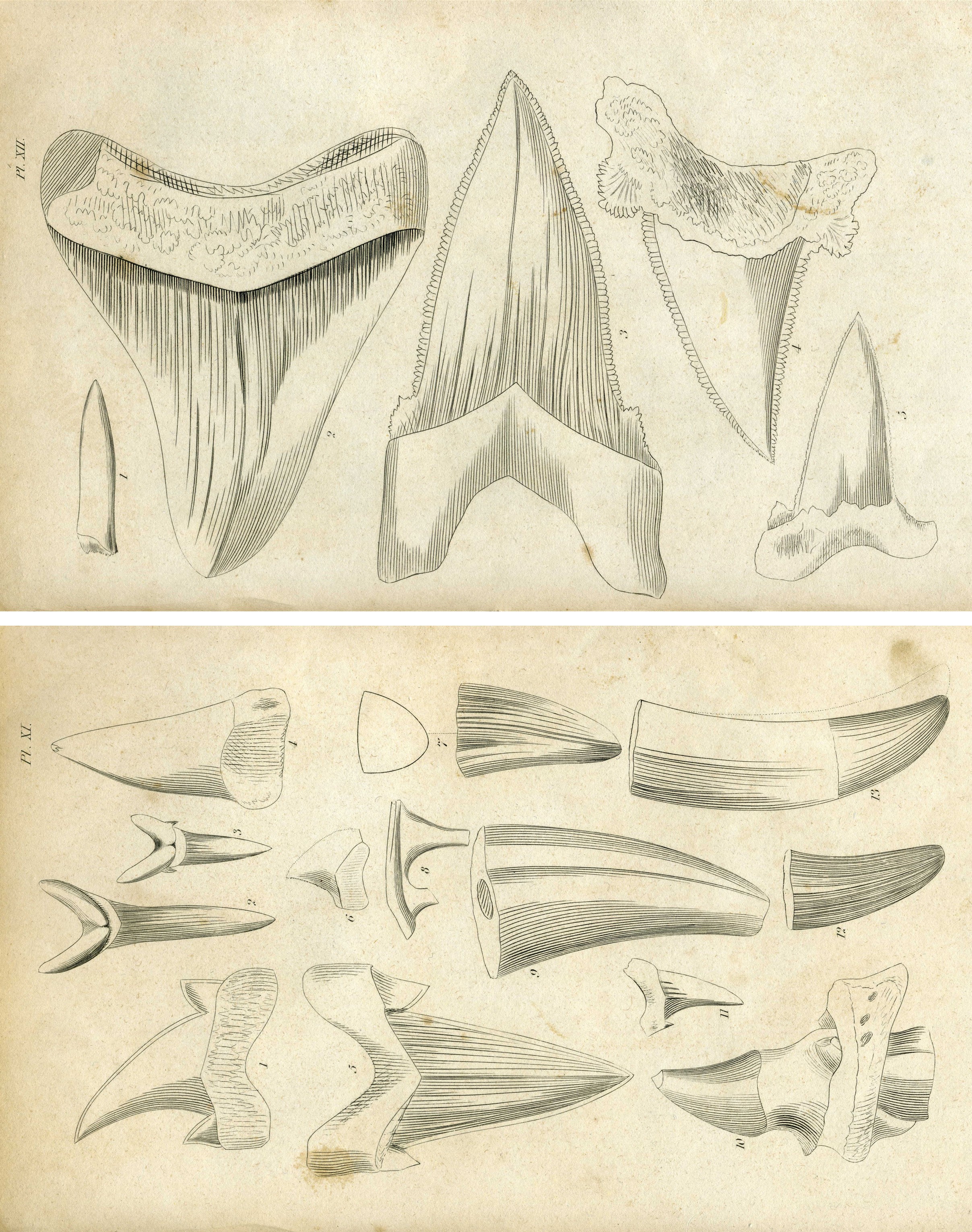HISTORICAL AND NOMENCLATURAL REMARKS ON SOME MEGATOOTHED SHARK TEETH (ELASMOBRANCHII, OTODONTIDAE) FROM THE CENOZOIC OF NEW JERSEY (U.S.A.)
DOI:
https://doi.org/10.13130/2039-4942/16440Keywords:
History of Paleontology; Chondrichthyes; Eocene; Miocene; Otodus obliquus; Otodus auriculatus; Otodus megalodon; Samuel George Morton; zoological nomenclature.Abstract
. In the second issue of Samuel Morton’s “Synopsis of the Organic Remains of the Cretaceous Group of the United States” published in June 1835, several otodontid shark teeth from Cenozoic formations of New Jersey are named with authorship of Louis Agassiz and meet the conditions of availability of the International Code of Zoological Nomenclatural. It has gone largely unnoticed that some of these names were introduced in this work before their publication in Agassiz’s masterpiece “Recherches sur les poissons fossiles”. The specimens presented by Morton were kept in the John Price Wetherill (1794-1853) collection that found its way into the paleontological collection of the Academy of Natural Sciences of Drexel University, Philadelphia, where most of them have been rediscovered. These teeth are part of the type series upon which Agassiz introduced Lamna obliqua Agassiz in Morton, 1835, Lamna lanceolata Agassiz in Morton, 1835, Carcharias lanceolatus Agassiz in Morton, 1835, Carcharias megalotis Agassiz, 1835 and Carcharias polygurus Agassiz in Morton, 1835, all of these species being referred to the genus Otodus in the present work. In order to secure the nomenclatural stability of the Otodontidae, it is established that Otodus lanceolatus is a junior synonym of Otodus obliquus, that “Carcharias” lanceolatus belongs to the genus Otodus Agassiz, 1838 and is invalid as a junior secondary homonym of Otodus lanceolatus, that Otodus megalotis is a junior synonym of Otodus auriculatus (Blainville, 1818), and that Otodus polygurus (Otodus polygyrus being an incorrect subsequent spelling) is a junior synonym of Otodus megalodon (Agassiz, 1835). Furthermore, it is shown that the date of publication of Otodus obliquus (Agassiz in Morton, 1835) is 1835 and not 1838 as previously thought.
Metrics

Downloads
Published
Issue
Section
License
Copyright (c) 2021 ARNAUD BRIGNON

This work is licensed under a Creative Commons Attribution-NonCommercial-NoDerivatives 4.0 International License.
The journal allow the author(s) to hold the copyright without restrictions.






